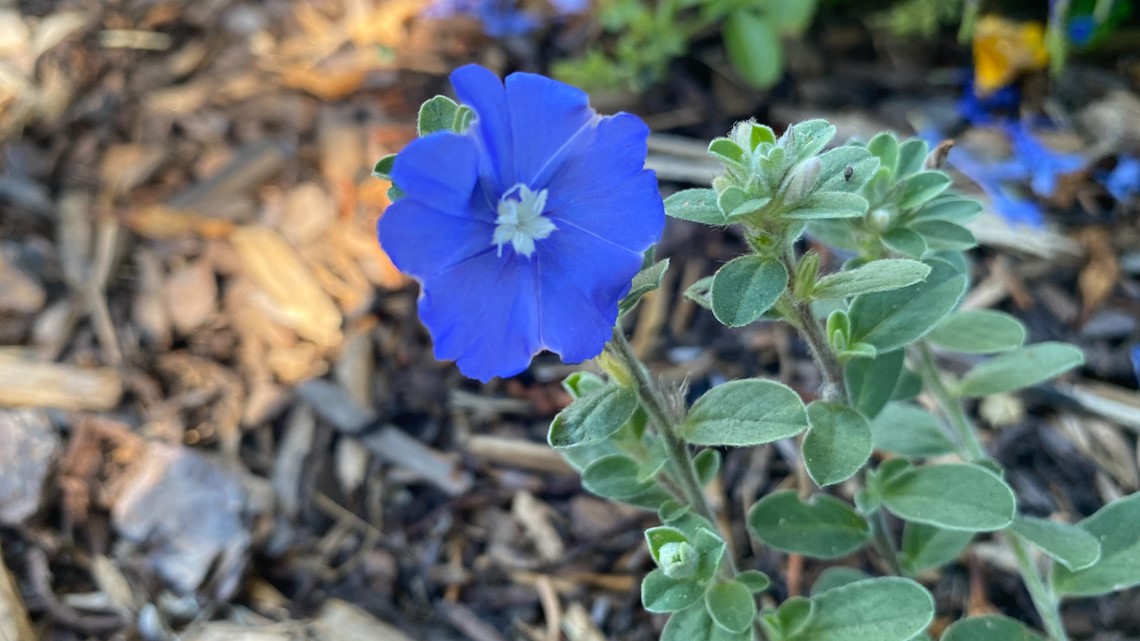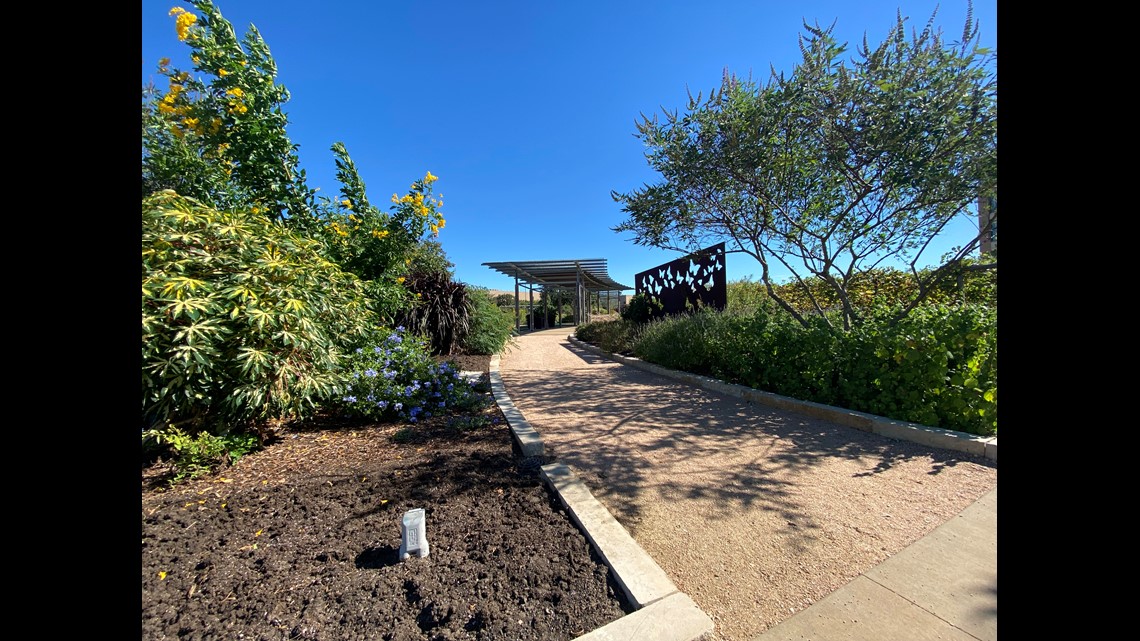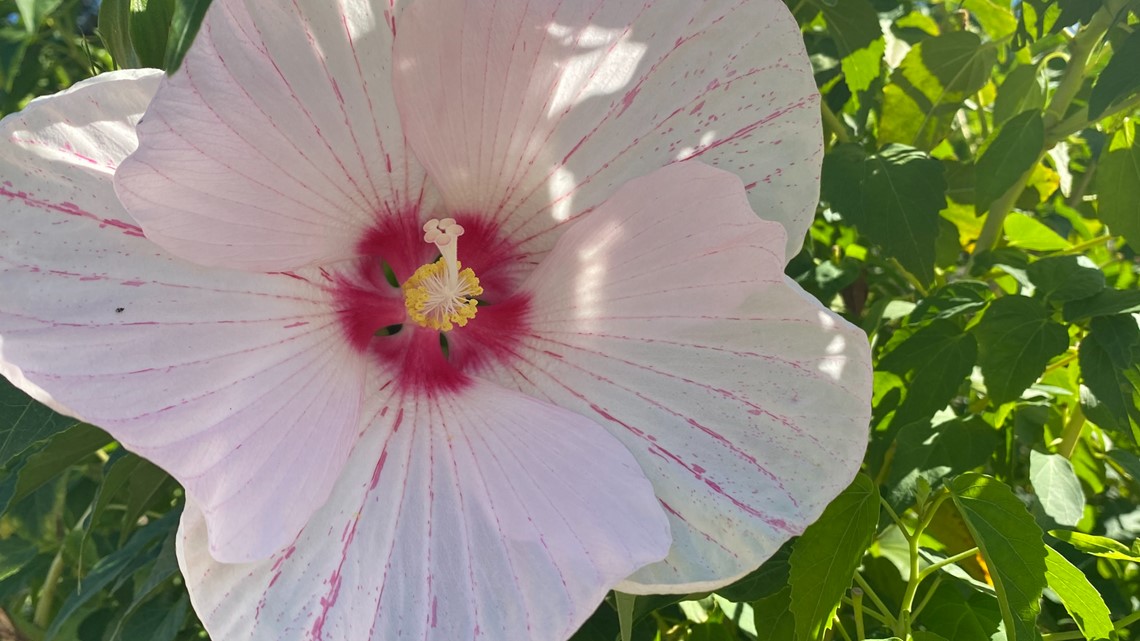COLLEGE STATION, Texas — Dr. Mike Arnold, Director of The Gardens at Texas A&M, said that despite contrary belief, fall is a wonderful time to plant in Texas. As the temperatures prepare to cool across the Brazos Valley, Dr. Arnold has a few tips on how to make sure your garden and plants are safe.
General tips
“Perfect time to plant trees and shrubs if you’re looking to put those in your garden,” Dr. Arnold said.
First things first, Dr. Arnold said right now is a great time to do some cleaning.
“Get rid of all those spin annuals and get ready for fall plantings,” Dr. Arnold said, “It's time to go in and plant with your fall liners, and if you want to plant a fall vegetable garden now is time to get it in the ground.”
For people who are into wildflowers, Dr. Arnold said the fall is the perfect season for wildflower planting.
“It's the growth that you're going to get on those seedlings this fall that determines how well your wildflowers will look in the spring,” Dr. Arnold said, “We want to get them planted in time for a little bit of growth before winter sets in.”
Dr. Arnold said now is also the time to deal with cool-season weeds.
“If you have turf areas that you'd like to put down a pre-emergent on or some of your landscape beds,” Dr. Arnold said, “Now's the perfect time to put down pre-emergent weed control for cool-season weeds before they actually pop up and get going.”
If you’re into tulips, hyacinths, narcissus and other bulbs in the spring, Dr. Arnold said typically you would start planning to plant those in the fall.
“It's time to actually buy this [bulb plants], [because] they require six to eight weeks of chilling,” Dr. Arnold said, “[then] put them into a cooler and about six to eight weeks from now, so kind of November ish, we're going to put those in the garden, and those will be ready for spring bloom for you.”
As leaves start to drop, Dr. Arnold said you should remove the fallen leaves from the turf area so it doesn’t get damaged.
“But it's [fallen leaves] an excellent material to use for either mulching or for composting then, as well,” Dr. Arnold said.
Dr. Arnold said the other thing to think about in your fall garden is pruning.
“As trees go completely dormant, we don't want to do it [pruning] too early or you will stimulate new growth that can be damaged by the winter,” Dr. Arnold said, “but once they're fully dormant, late fall-early winter is a great time to prune in and spruce up your trees and shrubs for the spring.”
Finally, Dr. Arnold said you want to think about your equipment and planning for the spring.
“A great thing to do is visit a public garden, see what looks good right now so that you can plan it things like Hollie’s or Mexican Buckeyes,” Dr. Arnold said.
Dr. Arnold said now is the time to plan for next year.
“It's also a great time to start planning your spring garden, and a great time to take care of your tools and lawn equipment, things like that while you have some downtime to do that,” Dr. Arnold said.


Rose care
Dr. Arnold said to be sure you’re mulching near the base of the roses to protect them from the cold weather.
“Then we also want to, later in the season, as we get in the wintertime, we would prune those back for spring growth,” Dr. Arnold said, “but it's a little early to do that right now, you tend to stimulate a lot of new growth, and you don't really want that going into winter.”
Fruits and vegetables care
Dr. Arnold said right now is a great time to plant fall vegetables.
“It's a wonderful time for those of you like cold crops like kale, cabbage and broccoli, things like that can be planted now,” Dr. Arnold said, “We can start thinking about strawberries, strawberries would be a great plant to plant in the fall, get it established and then you'll have nice yield for the spring.”


Trees and grass care
Dr. Arnold said you want to look at pre-emergence as one of the big things in the fall.
“Get down to the weed barriers as a pre-emergent right now, when we're at the end of the warm season and we're just getting ready for the cool season,” Dr. Arnold said, “Weeds to be in to germinate. We can control, save yourself a lot of time and in the wintertime.”
Normal occurrences during colder temperatures
The biggest concern Dr. Arnold said he hears a lot is when people’s live oaks start to drop leaves.
“While live oaks are mostly evergreen, as we get into late winter, you'll end up seeing them drop some of their old leaves just usually at the same time or prior to they begin to break,” Dr. Arnold said, “That's the normal life cycle one line up.”
Dr. Arnold said the same thing will sometimes happen with pine trees.
“The old needles on the interior of the canopy may begin to brown out and drop, and that's okay, they're older,” Dr. Arnold said, “If it's not the newer growth that's having problems, then that's just part of the natural cycle.”


How to survive the cold
Dr. Arnold said if you want your plant to survive the cold, it all depends on how important that plant is to you and what plants you're looking at.
“Now’s a great time and follow-up tropicals, particularly to make sure that you're picking up and potting the plant up where they can be moved in for protection in the winter,” Dr. Arnold said. “You can also take cuttings if they're things that you can propagate, now's a great time to get those routed, they won't route as well once it starts to get cooler.”
He adds most of our landscape, doesn't require a lot of protection in the wintertime.
“Some tender perennials you can mulch, a little bit in around the basis of them, some of our tender shrubs that will help protect the base of them in case we do have a really cold spell that kills back and then they'll come back,” Dr. Arnold said.
Dr. Arnold said the other thing that you can do is occasionally cover plants.
“For instance, you're getting an early frost, and you're going to have vegetables that still have a chance to ripen,” Dr. Arnold said, “You can come out cover those with either specialized winter cloth that's available, or even plastic or blankets, things like that can save you a few degrees that's not going to help if it's a real severe cold spell, but it'll help if we just have light frost.”



